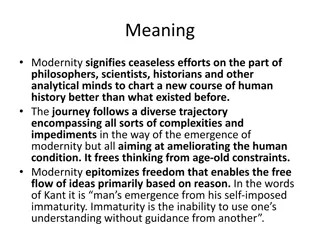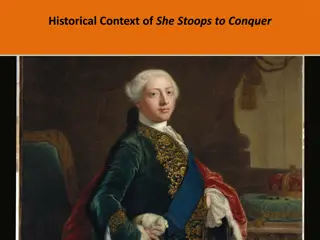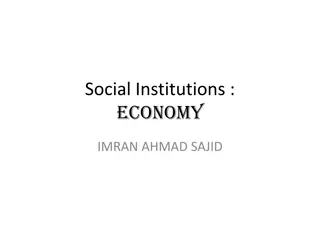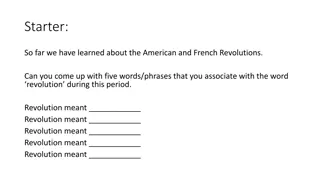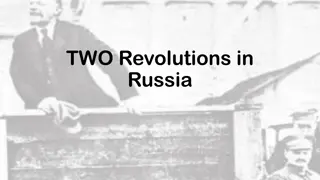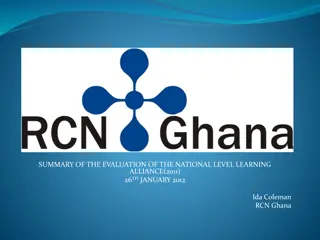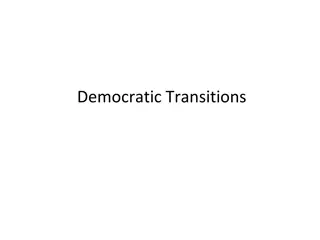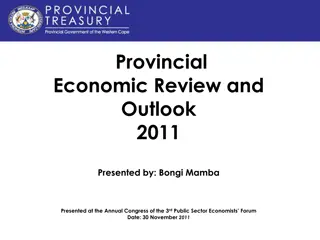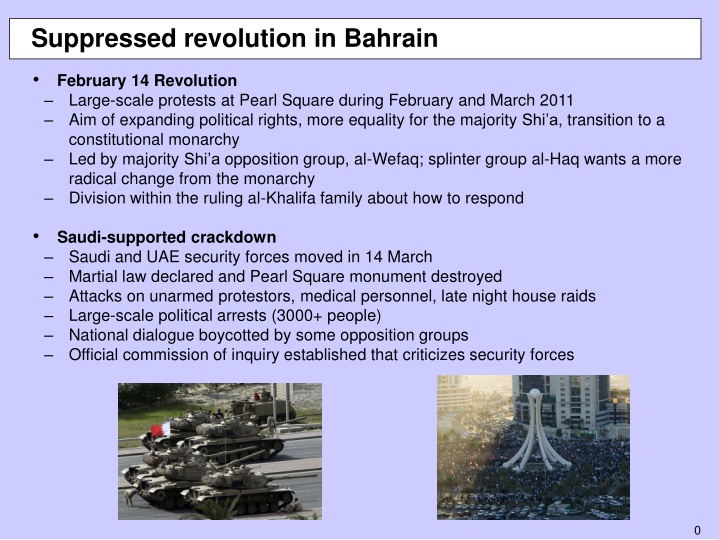
Revolutions in Bahrain, Libya, and Yemen: A Closer Look at Middle Eastern Unrest
Explore the suppressed revolution in Bahrain, the civil war in Libya, and the potential for state failure in Yemen, highlighting key events, challenges, and outcomes in each country during the period of unrest in the Middle East.
Download Presentation

Please find below an Image/Link to download the presentation.
The content on the website is provided AS IS for your information and personal use only. It may not be sold, licensed, or shared on other websites without obtaining consent from the author. If you encounter any issues during the download, it is possible that the publisher has removed the file from their server.
You are allowed to download the files provided on this website for personal or commercial use, subject to the condition that they are used lawfully. All files are the property of their respective owners.
The content on the website is provided AS IS for your information and personal use only. It may not be sold, licensed, or shared on other websites without obtaining consent from the author.
E N D
Presentation Transcript
Suppressed revolution in Bahrain February 14 Revolution Large-scale protests at Pearl Square during February and March 2011 Aim of expanding political rights, more equality for the majority Shi a, transition to a constitutional monarchy Led by majority Shi a opposition group, al-Wefaq; splinter group al-Haq wants a more radical change from the monarchy Division within the ruling al-Khalifa family about how to respond Saudi-supported crackdown Saudi and UAE security forces moved in 14 March Martial law declared and Pearl Square monument destroyed Attacks on unarmed protestors, medical personnel, late night house raids Large-scale political arrests (3000+ people) National dialogue boycotted by some opposition groups Official commission of inquiry established that criticizes security forces 0
Revolution and civil war in Libya Context Libya tightly ruled in a personalistic manner as a jamahiriyya (republic of the masses) and theoretically guided by Qaddafi s Green Book Tribal society underneath a thin state created through oil revenues Eastern Libya source of most historical opposition and oil wealth Small, highly personalized military dependent on Qaddafi Eastern revolt and immediate repression Protests in Benghazi begin 15 February 2011; security forces attack protesters and are driven out Rebel movement, composed of civilians, army defectors, and Islamist opposition Government uses death squads and sub-Saharan mercenaries to support repression NATO support and rebel victory Extensive back and forth advances and withdrawals across Libyan territory UNSCR 1973 promises civilian protection in March; 17 countries participate Rebels finally take Tripoli in August; Qaddafi loyalists routed and cornered by October Rebuilding a shattered state Up to 30,000 killed in the civil war; some reprisal killings continue Concern about demobilization and unification of the country NTC plans for election to a constitutional assembly by mid-2012 1
Revolution and the potential for state failure in Yemen Context Yemen in the poorest country in the Middle East; high population growth, rapid decline in resources Historically two countries, with the South still discriminated against by the center Houthi rebellion in the North; Southern movement claims in the South; al-Qa eda Mass protest begins 27 January 2011 protests begin in Sana a Early concessions by President Saleh won t run for re-election in 2013 Protests increase in size and spread through March Security forces begin to repress protests; triggering defections President Saleh steps down GCC brokers several failed deals with Saleh April-May 2011 Tribal loyalists begin to defect; ex: Sadiq al-Ahmar (Hashid) Civil conflict begins in May; assassination attempt wounds Saleh in June and he goes to Saudi Arabia to be treated; ongoing stalemate with the opposition Saleh returns to Yemen in September; signs the GCC-brokered deal 23 November Concerns about state failure Civil conflict may continue over control of the center Joint Meeting Parties (with Islah) set to lead in future elections Yemen as a potential safe-haven for al-Qa eda 3
Protest and repression in Syria Context Syria as a police-state with Ba athist ideology; comparative economic equality Alawite religious minority as dominant in the military Led by young ruler Bashar al-Assad Patterns of protest and repression Protests start 26 January, becoming a mass uprising by March 2011 Widespread, harsh repression, punctuated by minor concessions Centered first in Daraa, then in Homs and Hama Arab League attempts to negotiate a settlement; then active sanctions Shift to a civil war More than 4000 killed so far Move from peaceful protest to armed rebellion in Homs Low and mid-level army defections helped form the Free Syrian Army, which has increasingly launched attacks Potential for widespread sectarian violence 4
Lecture termsDecember 5-7 Bashar al-Assad Pearl Square Ba ath Party Al-Wefaq Alawites Al-Haq Arab League Al-Khalifa Free Syrian Army Muammar Qaddafi 2011 Tunisian elections Jamahiriyya 2011 Egyptian elections Benghazi 2011 Moroccan elections National Transitional Council Ali Abdullah Saleh Houthi Rebellion Southern Movement Joint Meeting Parties 5




